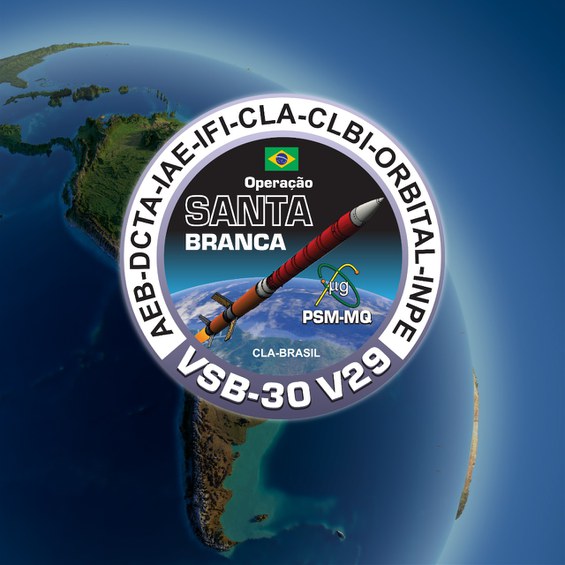Launch of the VSB-30 rocket is carried out successfully during Operation Santa Branca

The VSB-30 rocket, launched at 2pm this Sunday (23), from the Alcântara Spaceport, located in the state of Maranhão, took on board the Suborbital Microgravity Platform Qualification Model (MQ-PSM). The next steps involve analyzing the results of scientific experiments.
After qualification, the PSM can now be used to carry out experiments in a microgravity environment. It is noteworthy that since the conception of PSM, there have been intense efforts to develop technology in the national market. There is interest in providing microgravity experiment services in Brazil, and PSM crowns this training process with national companies.
The Suborbital Microgravity Platform (PSM) was developed through a partnership between the Brazilian Space Agency, the company Orbital Engenharia, the Financier of Studies and Projects (FINEP) and the Institute of Aeronautics and Space (IAE). On this platform, a set of instruments was boarded to evaluate flight performance and the “Multi-User Oven” experiment, developed by the National Institute for Space Research (INPE).
The success of Operation Santa Branca allows the country to explore this type of launch for those interested in scientific research and the development of technologies in the microgravity environment.
“Brazil will now be able to provide, autonomously, experimentation services in a microgravity environment, using the Alcântara Space Center (CEA), the VSB-30 and the PSM. We will also open a market for the Brazilian space industry, for entrepreneurs and for Science and Technology Institutions”, explains Carlos Moura, president of the Brazilian Space Agency.
The Microgravity Program was created in October 1998, through Resolution No. 36, of the AEB Superior Council. It had its last restructuring in January 2015. The objective is to enable the carrying out of scientific experiments and technological development, through selection, based on scientific-academic-technological merit, of proposals submitted to Opportunity Announcements (AOs).
The first launch with the VSB-30, in Brazil, took place on October 23, 2004. The rocket was developed by the Institute of Aeronautics and Space (IAE), in partnership with the German Aerospace Center (DLR). So far, 33 launches have been carried out successfully. Five of them in Brazil and 28 abroad.
About the Suborbital Microgravity Platform (PSM)
It is equipment responsible for all monitoring and communication with the payload before and during the mission, consisting of a set of modules controlled at angular speed, equipped with a telemetry system for transmitting flight and experiment data, and equipped with a recovery system for rescue at sea.
The Platform is responsible for fixing, power supply and environmental protection of the experiments on board during all phases of the flight, in hermetic and non-hermetic modules. Furthermore, it is part of plans for the nationalization of a complete vector set (rocket + platform) aimed at research in microgravity, as Brazil previously used the MicroG payload developed by the German Space Agency (DLR).
It was developed with support and partnerships between AEB, the Financier of Studies and Projects (FINEP), the Institute of Aeronautics and Space (IAE) and the Company Orbital Engenharia.
Features of the Suborbital Microgravity Platform (PSM)
It has a control module, cold gas module and recovery module;
Provides an airtight environment for experiments when late access is not necessary;
Total mass of experiments in each nodule: equal to or less than 30 kg;
Total mass of experiment in PSM: equal to or less than 60 kg for minimum configuration and equal to or less than 75 kg for other configurations;
Length: ~ 6 m (depending on configuration and number of modules) and Diameter: 438 mm.
Source: GOV.BR

